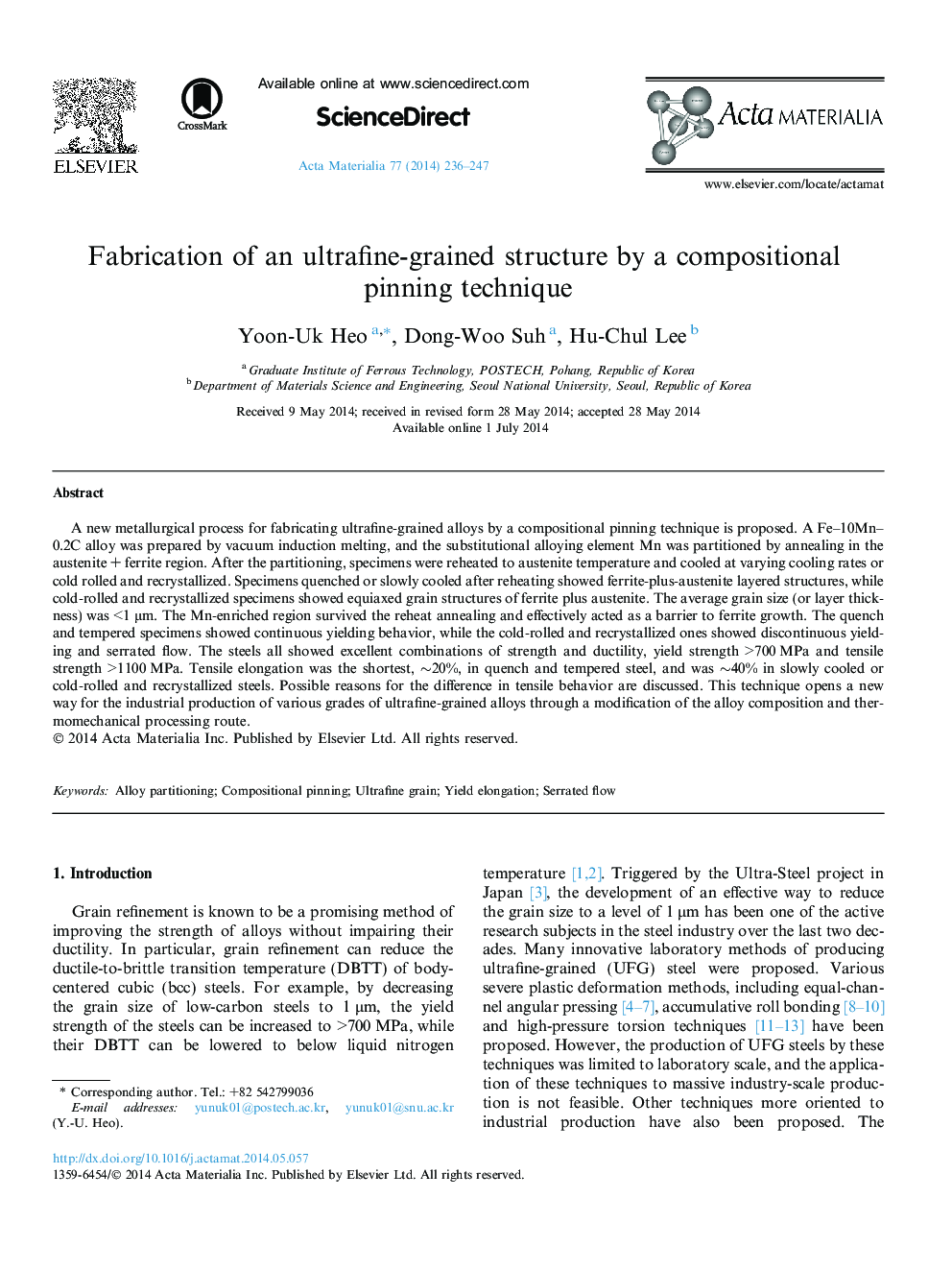| Article ID | Journal | Published Year | Pages | File Type |
|---|---|---|---|---|
| 7881473 | Acta Materialia | 2014 | 12 Pages |
Abstract
A new metallurgical process for fabricating ultrafine-grained alloys by a compositional pinning technique is proposed. A Fe-10Mn-0.2C alloy was prepared by vacuum induction melting, and the substitutional alloying element Mn was partitioned by annealing in the austenite + ferrite region. After the partitioning, specimens were reheated to austenite temperature and cooled at varying cooling rates or cold rolled and recrystallized. Specimens quenched or slowly cooled after reheating showed ferrite-plus-austenite layered structures, while cold-rolled and recrystallized specimens showed equiaxed grain structures of ferrite plus austenite. The average grain size (or layer thickness) was <1 μm. The Mn-enriched region survived the reheat annealing and effectively acted as a barrier to ferrite growth. The quench and tempered specimens showed continuous yielding behavior, while the cold-rolled and recrystallized ones showed discontinuous yielding and serrated flow. The steels all showed excellent combinations of strength and ductility, yield strength >700 MPa and tensile strength >1100 MPa. Tensile elongation was the shortest, â¼20%, in quench and tempered steel, and was â¼40% in slowly cooled or cold-rolled and recrystallized steels. Possible reasons for the difference in tensile behavior are discussed. This technique opens a new way for the industrial production of various grades of ultrafine-grained alloys through a modification of the alloy composition and thermomechanical processing route.
Keywords
Related Topics
Physical Sciences and Engineering
Materials Science
Ceramics and Composites
Authors
Yoon-Uk Heo, Dong-Woo Suh, Hu-Chul Lee,
